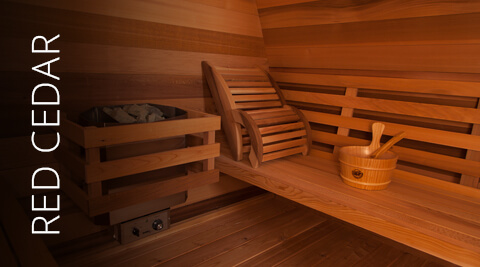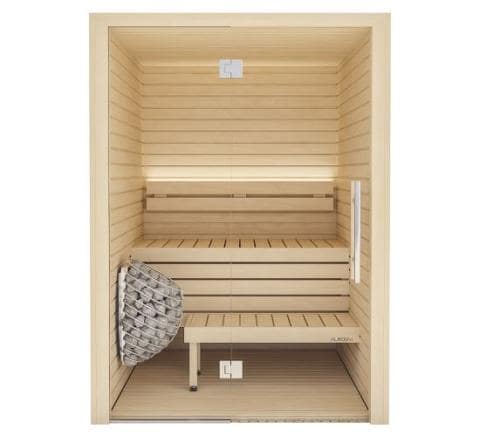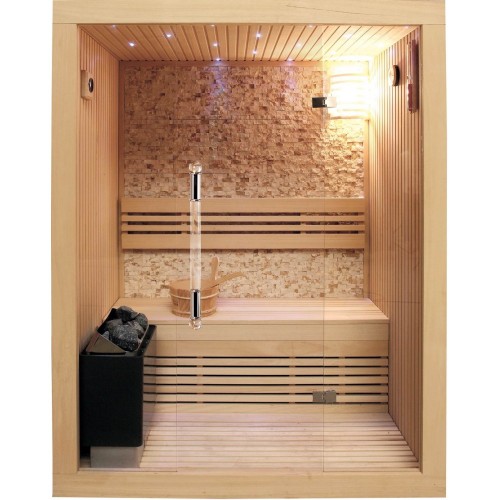The Basic Principles Of Traditional Sauna
The Basic Principles Of Traditional Sauna
Blog Article
Top Guidelines Of Traditional Sauna
Table of ContentsTraditional Sauna for DummiesThe 6-Second Trick For Traditional SaunaThe 3-Minute Rule for Traditional Sauna5 Easy Facts About Traditional Sauna ShownNot known Details About Traditional Sauna
Most of the weight lost in a sauna is water loss and is re-gained upon rehydrating. However, undoubtedly sauna can be a fundamental part of a healthy and balanced fat burning program. To take a look at the distinctions between conventional and IR saunas, I will separate these into proven, academic, and produced distinctions.Thus, the best factor in the saunawhich goes to the ceiling straight over the sauna heateris usually in between 185 and 190 F. Claims that a typical sauna exceeds 200 F is merely not real and not applicable for electric saunas sold in the United States. The temperature level for a far-infrared sauna is generally set between 120 and 140 F; however, unlike the standard sauna, the goal in and IR space is not to achieve a high temperature level.
Because of this, the temperature distinction is nearly unimportant, considering that excessive sweating causes both sauna kinds, but the approach of heating up the body is different. In an IR sauna the bather will certainly feel warm and will certainly sweat profusely, yet at much lower temperature levels (Traditional Sauna). Thus, if the objective is to spend longer time periods in the sauna, the IR sauna is an excellent choice
When a standard sauna has actually been correctly warmed, the sauna wall surfaces are warm, the air temperature level has actually attained established temperature and the rocks are very warmed. As an intriguing side note, the warmed wall surfaces and the rocks are discharging far-infrared heat, integrated with the warmed air, to produce an "wrapping up warm".
Traditional Sauna Things To Know Before You Get This

When the heat is attained, the elements cycle on and off to maintain the heat. The majority of traditional sauna users delight in pouring water over the rocks to produce steam to increase sauna humidity levels. The advantages of pouring water over the rocks include: making the room more comfortable, dampening the nasal passages, and permitting the usage of aromatherapy by mixing vital oils with the water.

When the power goes into the body, it creates the body temperature to raise and eventually causes sweating. In an infrared sauna it is very important for the emitters/heaters to continue to be on almost constantly. Considering that there is no mass of rocks to preserve warm, the sauna will certainly cool if the emitters closed off.
As stated above, the sauna bather in an infrared room intends to place himself before operating emitters to obtain maximum take advantage of the warm. The heating time for both spaces can be really different, depending upon just how the rooms are used. For a conventional sauna, a bather needs to allow 30-40 minutes for the space to attain a desired Website temperature level and to properly pre-heat the rocks.
6 Easy Facts About Traditional Sauna Shown
A well constructed sauna will generally achieve a temperature of 150-160 F in about 30-40 mins. For hotter temperature levels, the area might require to warmth for a longer period.

Standard saunas often tend to be bigger (for this reason utilize even more electrical power) than infrared saunas, although standard saunas are certainly readily available in one and two individual sizes as well. For a two-person standard sauna, 5x6 or 5x7 size is most popular. The leading bench can easily seat two or three people and is likewise long enough to lie down throughout the sauna session.
Some Ideas on Traditional Sauna You Need To Know
The typical price per kWH of electrical power in the united state is about $0.11, so a 4.5 kW heater will cost around $.50 to compete one hour, if the heating unit runs continually for one hour. Commonly a sauna heating unit you can try this out will certainly compete 75% of the initial hour and 50% of succeeding hours on because the aspects cycle once the set temperature is achieved.

Finally, there is a rarely gone over distinction in the social experience in between the two areas. While our culture has actually shed some of the social advantage of the typical sauna experience, it can be very socially gratifying (Traditional Sauna). From family members time in the sauna, to heart-felt discussions with considerable others, to sauna partiesthe conventional sauna experience can result in intimate interacting socially
Top Guidelines Of Traditional Sauna
A lot of reference higher end infrared rooms consist of colored light treatment, stereo and full-glass fronts. The dimension of many rooms permit for 2 individuals to easily utilize the room, while some designs may enable a third or fourth individual to utilize the area. Custom infrared rooms are additionally available, with area dimensions available up to 7' x 8' x 7' high.
Report this page